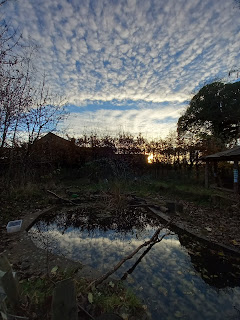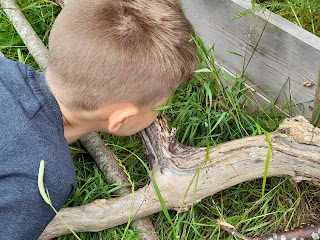Wanderings vs. Wonderings
Since the School year ended I've managed to visit a couple of friends around the country and get some walking in across five different counties.
It's amazing how often it means I stumble across possibilities for Outdoor Learning in some unusual places!
Outdoors remains a safer environment than inside. Events and attractions and just the great outdoors remains a good place to explore - and the need for it when School starts in September grows.
Many schools are heading back into classes of 30 with new guidelines and baited breath. Many parents are still awaiting some kind of sign that their child will be a) safe, and b) unlikely to bring a virus home. The reputation of the weeks between a new school year dawning and the Christmas break as one full of colds and possible flu etc doesn't inspire confidence.
So, outside air will circulate quickly and disperse most of the virus if it's in the air, plus UV light will diminish it's power, stepping outside the building makes sense.
The Longest Day has passed, and although not noticeable yet, the days are getting shorter. The UK is notoriously dull in late Autumn and over Winter, with sun-up at 8am and sun-down by 6pm, but UV light filters through! Maybe not sunshine, and maybe not strong, but it is there (albeit hiding way too frequently!)
I'd like to blame renewed national interest towards taking learning outside for my constant 'radar' that notices anything that can be adapted into a meaningful learning opportunity! However I've done it for years! I blame firm foundations in EYFS that have programmed me to hone in on pictures, places, events, experiences and activities that I feel can be somehow implemented in a school environment...
Some 'inspiration' can be obvious. Like the photo of a garden path my Brother-in-Law created a decade or so ago.
Sourcing old tiles, old bricks, bags of pebbles etc, would not be easy. Neither would digging 6 inches down to sink the mosaics into the ground! I have no real plans to do this anytime soon, but the image is squirrelled away for adaptation some time in the future!
Other sights and sites open a train of thought because they show the potential to be adapted, twisted and evolved into something else...
Classic and not so classic statues along a story trail to inspire ideas make an area fun also. Those above are courtesy of The Forbidden Corner in the North Yorkshire Dales. A weird and wonderful place with hidden paths and winding stairs, stepping stones and a maze. The entire place is a series of follies in a garden, set in beautiful countryside. Visiting children were full of chatter about what they could see through the eye window and who the legs belonged to! They also wondered what had been in the urn the stone child was sitting on. They were amazing story openers, obviously the tourists milling about were not writing anything down, but the imaginations were in overdrive!
A few museums across the world have started to install 'archaeology sites' for children to explore. I've seen a few of these, from Cape Town Aquarium, to Jorvik DIG in York, and a few online over the years that I really covet!
Whether it's a sand pit or a tray of salt, it proves there are ways to put History into any mud patch, for Forest School excavation of natural objects or carefully 'hidden artefacts' to support a class topic!
There's always planting to attract insects for study. The bug hotels are wonderful, but you can't beat the free wanderings of bees and butterflies. Lockdown didn't help the more formal growing process within the wildlife garden, but most of it was salvaged and the wilder areas thrived. Now the Summer holidays are a time of wondering if there's enough rain to keep things alive...
And the need for more sticks!!! Forest School never seems to have enough. Hopefully I will get the chance to do some coppicing and pruning and build up some decent stick piles before the new school year descends.
Trying to predict what will be useful, what the priorities for development should be, and how it will all be time managed is a challenge, but utilising the outside is both obvious and especially important after months of restricted space.
Children have had a very strange 2020 so far. Whether they adapted well to home learning or not. If they were key-worker's children and never left school, they are used to some sort of routine, but it wasn't the general school timetable they were immersed in up until March. Even when schools re-opened to some on June 1st it wasn't a return to 'normal', smaller classes and new ways of working needed some adaptation. There are also a huge number of children who have not been back to school at all. By September it will be five and a half months since they were in a classroom - and what they return to will be different to what they left.
And we know that being in nature has a calming effect on humans.
Schools will be putting the children first.
Whether in a corner of a playground or out on a huge playing field getting classes outside will help the settling of academic year 2020/2021.
Making time to develop any of this is going to be tough, especially as it is a layer of extra ideas on top of already skeleton plans for the future! And they are all interrupted bu CoViD!
September promises to be very busy, so prepping for the rest of the year is going to take second place to prepping for the first term. That won't stop the possibilities from popping all over the place, nor will it hold at bay any development we're already slowly progressing.
The summer isn't over.
There's lots more to discover.
The list will grow...


















Comments
Post a Comment